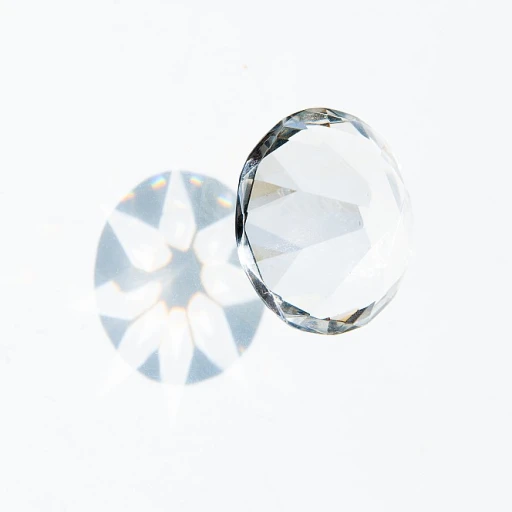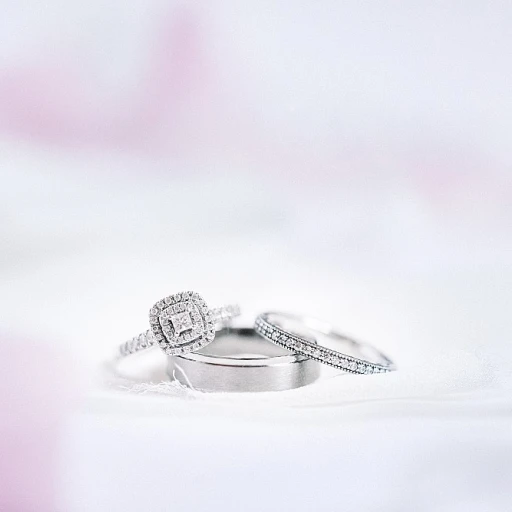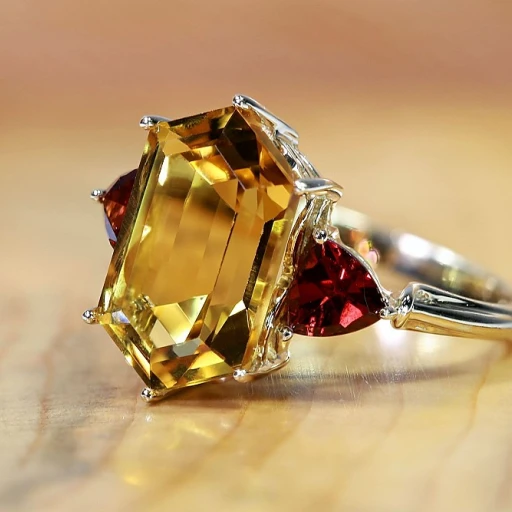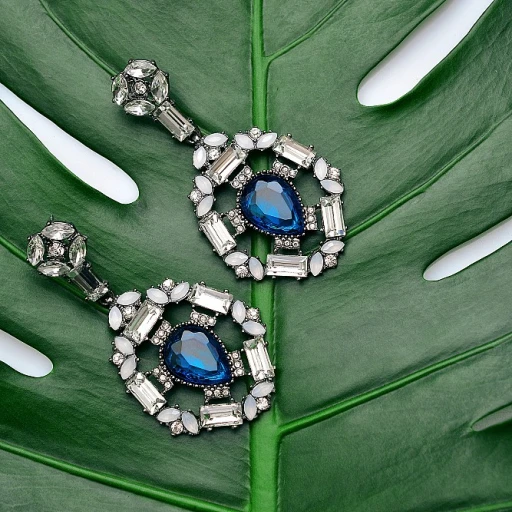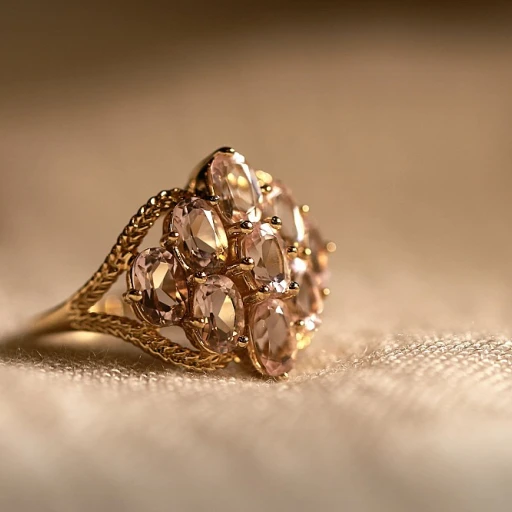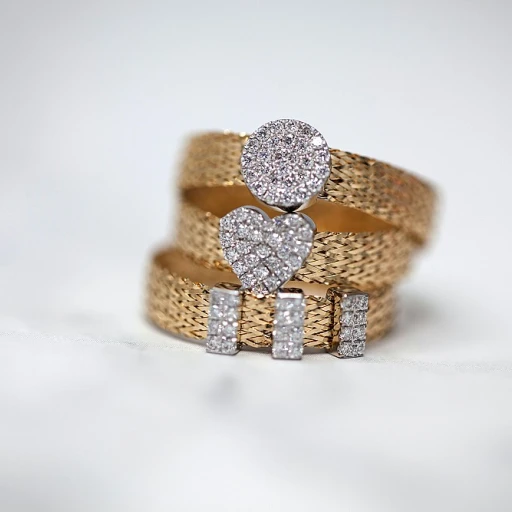
The History of Jewelry Hallmarks
Tracing the Steps: The Origin of Jewelry Hallmarks
The concept of hallmarking jewelry dates back centuries, with roots firmly planted in ensuring trust and authenticity in precious metal trade. Some of the earliest examples trace to the Byzantine Empire and have since evolved into a standardized practice recognized worldwide. As nations began to appreciate not just the aesthetic, but also the economic significance of these adornments, they instituted hallmark systems to certify the quality and purity of metals used in jewelry making. The medieval guilds played a seminal role. These were associations of craftsmen, including jewelers, who, among other responsibilities, would inspect and hallmark pieces. This safeguarding measure protected both the craft's integrity and the buyer's investment. Further into the Renaissance, the idea of hallmarking served as a means of regulation and prestige, establishing a piece's provenance and authenticity. The legacy of these practices is evident today, where the authenticity of fine jewelry is still a focal point, as discussed in depth in the Mastering the Stamp of Distinction. The rich and intricate tradition of hallmarking reveals its critical role in not just preserving the craft, but also providing a seal of quality that travels through time. To understand its importance in verifying the genuineness of your fine jewelry collection, unraveling the layers behind these marks continues to be profoundly rewarding.Decoding Hallmarks: What They Mean
Interpreting the Language of Hallmarks
Understanding how to decode hallmarks can be both an art and a science, crucial for any fine jewelry owner. These small symbols and numbers are not merely decorative; they convey essential details about a piece’s authenticity, origin, and quality.
When examining a hallmark, start by identifying the purity mark. In many countries, this indicates the precious metal content, expressed in parts per thousand. For example, a "750" stamp on a gold ring signifies 75% purity, commonly known as 18-carat gold.
Another key component is the maker’s mark, which identifies the artisan or company behind the piece. This unique emblem can give clues about the jewelry's history, offering insight into its provenance and increasing its sentimental and monetary value.
Some hallmarks also include an assay office mark, denoting the location where the piece was certified. Recognizing these symbols requires familiarity with various jurisdictional markings, as different places may have unique assay office symbols.
Finally, date marks might be present on certain pieces. These are invaluable for determining the age of jewelry, which can add a layer of historical narrative to the piece. Often, a date letter provides a yearly indication, further embedding the jewelry within a specific time period.
Learning to interpret these symbols can enhance your appreciation and understanding of your collection, aligning seamlessly with the broader narrative of hallmark history and function.
The Role of Hallmarks in Authenticating Fine Jewelry
The Importance of Hallmarks in Authenticating Fine Jewelry
When it comes to authenticating fine jewelry, hallmarks stand as a trusted seal of approval. These engravings serve as a testament to a piece's integrity and craftsmanship, acting as a reliable indicator of quality. According to jewelry professionals, hallmarks not only certify the metal purity but also speak volumes about the piece's origin and authenticity. The significance of hallmarks extends beyond mere metal quality verification. They offer insight into the manufacturer's credibility, providing peace of mind to both buyers and sellers in the fine jewelry market. This tradition, deeply woven into the fabric of jewelry history, allows for confidence in investment and assurance in purchase, fostering a virtuous circle of trust between artisans, vendors, and consumers. In a market inundated with imitation and counterfeit jewels, hallmarks play a pivotal role. They act as a safeguard against the extensive counterfeit market, ensuring that the craftsmanship and value of luxury pieces are upheld. This aspect becomes even more apparent when exploring the elegance of such jewelry and its mark in the industry. By understanding and recognizing hallmarks, buyers can effectively navigate the fine jewelry landscape, discerning genuine pieces from fraudulent ones. This not only protects their tangible assets but also preserves the heritage and artistry synonymous with fine jewelry. For a detailed understanding of hallmark meanings and their significance across different regions, exploring these resources can offer valuable insights.Common Hallmarking Standards Across the Globe
Understanding International Jewelry Hallmark Standards
Navigating the world of fine jewelry requires astute understanding of hallmarking standards across different regions. Each country has its distinct regulations, ensuring authenticity and quality. Here are some hallmarking traditions from around the globe:
- United Kingdom: The UK boasts one of the oldest and most established hallmarking systems. The Assay Offices in London, Birmingham, Sheffield, and Edinburgh certify jewelry by assaying and stamping it with hallmarks that include the maker's mark, metal purity, and the Assay Office's symbol.
- United States: In the US, hallmarking is not mandatory, but reputable jewelers often choose to include maker's marks and metal content stamps. The Federal Trade Commission oversees these declarations to prevent misrepresentation.
- France: French jewelry is renowned for its rigorous standards. French hallmarks often include the eagle's head to denote gold and a maker's mark in a unique shape corresponding to the artisan.
- India: India's hallmarking includes specific symbols denoting purity levels verified by the Bureau of Indian Standards. With gold being culturally significant, these marks assure buyers of their purchase's legitimacy.
- China: China's hallmarking system is overseen by the National Gemstone Testing Center. Marks include the karat weight and sometimes a 'G' for gold.
These hallmarking practices act as a safeguard against fraudulent activity and help jewelers build trust with consumers by providing transparency. They also ensure compliance with local and international standards, making global trade of jewelry smoother and safer.
As these hallmarking standards continue to evolve, expertise in international regulations is becoming a valuable asset for both collectors and sellers, ensuring that every piece of fine jewelry retains its value and authenticity.
Challenges in Hallmarking and How to Overcome Them
Complexities Encountered in Hallmarking
The process of hallmarking fine jewelry, while essential for authenticity and verification, comes with its own set of challenges. As we delve deeper into the critical aspects of hallmarking, it becomes clear that staying up-to-date with the varied and evolving standards across the globe is no small feat. This complexity often influences both jewelers and consumers. Below are some key challenges faced in the hallmarking process and strategies to navigate them:
- Inconsistent Standards: Various countries adhere to different hallmarking systems, making it difficult for international jewelers to comply universally. Familiarizing oneself with local regulations and international standards becomes imperative for businesses operating on a global scale.
- Verification and Compliance Costs: The financial burden of ensuring compliance with hallmarking standards can be significant. Regular updates and audits may be required, which can be taxing for smaller retailers. Collaborating with trusted third-party verifiers can alleviate some of these costs.
- Keeping Pace with Regulatory Changes: Regulations regarding hallmarking can change suddenly. Constant vigilance is necessary to adapt to such changes, which may demand swift alterations to the hallmarking process.
- Counterfeiting Concerns: Despite hallmarking being a robust method of authentication, counterfeit marks remain a threat. Utilizing advanced technology for hallmarking can counteract this issue by providing harder-to-duplicate indicators of authenticity.
- Communication and Education: Lack of consumer education about hallmarking can undermine its effectiveness. Leveraging educational campaigns to inform consumers about the importance and meaning of hallmarks can enhance trust and significantly boost brand reputation.
To effectively tackle these challenges, it is vital for fine jewelry owners and retailers to invest in ongoing education and embrace international collaborations. Staying informed not only safeguards the authenticity of the jewelry but also reinforces consumer trust and opens new market opportunities.

